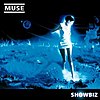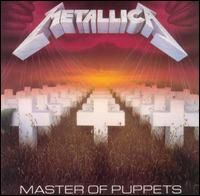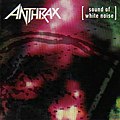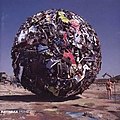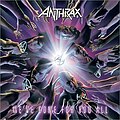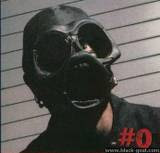

Kiss (band)
| Kiss | |
|---|---|
 Kiss in concert in Boston, 2004; left to right: Gene Simmons, Tommy Thayer, Paul Stanley and Eric Singer | |
| Background information | |
| Origin | New York City, New York, United States |
| Genre(s) | Hard rock, heavy metal, glam metal |
| Years active | 1973 — Present |
| Label(s) | Casablanca, Mercury, Sanctuary, Columbia |
| Associated acts | E.S.P., Frehley's Comet, Union, Vinnie Vincent Invasion, White Tiger, Wicked Lester |
| Website | www.kissonline.com |
| Members | |
| Paul Stanley Gene Simmons Tommy Thayer Eric Singer | |
| Former members | |
| Peter Criss Ace Frehley Eric Carr Vinnie Vincent Mark St. John Bruce Kulick | |
| This article includes inline links to audio files. If you have trouble playing the files, see Wikipedia Media help. |
Kiss is an American rock band formed in New York City in January 1973. Easily identified by their trademark face paint and stage outfits, the group rose to prominence in the mid-1970s on the basis of their elaborate live performances, which featured fire-breathing, blood spitting, smoking guitars, and pyrotechnics. Kiss has been awarded 24 gold albums to date.[1] The group's worldwide sales exceed 90 million albums.[2][3]
The original lineup of Paul Stanley (rhythm guitar and lead vocals), Gene Simmons (bass and lead vocals), Ace Frehley (lead guitar and vocals), and Peter Criss (drums and vocals) is the most successful and identifiable. With their makeup and costumes, they took on the personae of comic book-style characters: The Demon (Simmons), Starchild (Stanley), Space Ace (Frehley), and The Catman (Criss). The band explains that the fans were the ones who ultimately chose their makeup designs. The "Demon" makeup reflected Gene's cynicism and dark elements. Paul Stanley became the "Starchild" due to his tendency to be referred to as the "starry-eyed lover" and "hopeless romantic." Ace Frehley's "Space Ace" makeup was a reflection of him always being "spaced-out," and supposedly being from another planet. Peter Criss' "Catman" makeup was in accordance with the belief that Peter had nine lives due to his rough childhood in Brooklyn. Due to creative differences, both Criss and Frehley were out of the group by 1982. The band's commercial fortunes had also waned considerably by that point.
In 1983, Kiss abandoned their makeup and enjoyed a commercial resurgence throughout the rest of the decade. Buoyed by a wave of Kiss nostalgia in the 1990s, the band announced a reunion of the original lineup (with makeup) in 1996. The resulting Kiss Alive/Worldwide/Lost Cities/Reunion Tour was the top-grossing act of 1996 and 1997. Criss and Frehley have since left Kiss again and have been replaced by Eric Singer and Tommy Thayer, respectively. The band continues to perform, while Stanley and Simmons have remained the only two constant members.
| |
History
Early years and struggles (1971–1975)
Kiss traces its roots to Wicked Lester, a New York City-based rock and roll band led by co-founders Gene Simmons (born Chaim Witz in Haifa, Israel on August 25, 1949) and Paul Stanley (born Stanley Harvey Eisen in Queens, New York City on January 20, 1952). Wicked Lester, with their eclectic mixture of musical styles, never achieved any success. They recorded one album, which was shelved by Epic Records, and played a handful of live shows. Simmons and Stanley, feeling that a new musical direction was needed, abandoned Wicked Lester in 1972 and began forming a new group.
In late 1972, Gene Simmons and Paul Stanley came across an ad in Rolling Stone placed by Peter Criss, a veteran drummer from the New York club scene, who was previously in bands called "Lips" and "Chelsea". Criss (born George Peter John Criscuola on December 20, 1945 in Brooklyn, New York City) auditioned for and joined the new version of Wicked Lester. The trio focused on a much harder style of rock than Wicked Lester played. Inspired by the theatrics of the New York Dolls, they also began experimenting with their image by wearing makeup and various outfits.In November 1972, the trio played a showcase for Epic Records A&R director Don Ellis, in an effort to secure a record deal. Although the performance went well, Ellis hated the group's image and music. On top of that, as he was leaving, he was vomited on by Criss's brother.
In January 1973, the group added lead guitarist Paul "Ace" Frehley (born April 27, 1951 in the Bronx, New York City). According to the book Kiss & Tell by Ace Frehley's former best-friends, Gordon G.G. Gebert and Bob McAdams (who accompanied Ace Frehley to the audition) the eccentric Frehley impressed the group with his first audition, although he showed up wearing two different sneakers (one red and one orange) and began warming up on his guitar while another guitarist (Bob Kulick) was being auditioned by the band. A few weeks after Frehley joined, the Wicked Lester name was dropped and the band became Kiss.
Stanley came up with the name; as he, Simmons, and Criss were driving around New York City. Criss mentioned that he was in a band called Lips, so Stanley said what about KISS (Reminised by Simmons on the KISS video Exposed). Frehley created the now-iconic logo (making the "SS" look like lightning bolts).[10] The runic letters happened to look similar to the insignia of the Nazi SS, or Waffen-SS, a symbol that is now illegal to display in Germany. Therefore, in Germany, after 1979, all of the band's album covers and merchandise used a modified version of the logo, in which the "SS" looks like a backwards "ZZ." The band's name has been rumored to have many hidden meanings, among them an acronym for Knights In Satan's Service or acronym for Keep It Simple Stupid. None of these rumors have any basis in fact, and the band has consistently denied them.
The first Kiss performance was on January 30, 1973, for an audience of three at the Popcorn Club (renamed Coventry shortly afterward) in Queens. In March of that year, the band recorded a five-song demo tape with producer Eddie Kramer. Former TV director Bill Aucoin, who had seen the group at a handful of showcase concerts in the summer of 1973, offered to become the band’s manager in mid-October. Kiss agreed, with the condition that Aucoin get them signed to a recording contract within two weeks. On November 1, 1973, Kiss became the first act signed to former teen pop singer and Buddha Records executive Neil Bogart's new label, Emerald City Records (which was shortly afterward renamed Casablanca Records).
The band entered Bell Sound Studios in New York City on October 10, 1973 to begin recording their first album. On December 31 the band had their official industry premier at the Academy of Music in New York City, opening for Blue Öyster Cult. It was at this concert that Simmons accidentally set his hair (which was coated in hairspray) ablaze for the first of many times while performing his inaugural firebreathing stunt.
Kiss's first tour started on February 5, 1974 in Edmonton, Alberta, Canada, at the Northern Alberta Jubilee Auditorium. The band’s self-titled debut album, Kiss, was released on February 18. Casablanca and Kiss promoted the album heavily throughout the spring and summer of 1974. On February 19, the band performed "Nothin' to Lose," "Firehouse," and "Black Diamond" for what would become their first national television appearance, on ABC's Dick Clark's In Concert (aired March 29). On April 29, the band performed "Firehouse" on The Mike Douglas Show. This broadcast included Simmons's first televised interview, a conversation with Douglas in which Simmons declared himself "evil incarnate," eliciting titters from an uncomfortable and largely confused studio audience. Fellow guest Totie Fields, remarked that it would be humorous if, beneath all the make-up, Simmons was "just a nice Jewish boy." Simmons deftly parried this remark with neither a confirmation nor denial, by saying simply, "You should only know." To which she responded, "I do. You can't hide the hook," a sly reference to Simmons's nose.
Despite the publicity and constant touring, Kiss initially sold just 75,000 copies. Meanwhile, the group and Casablanca Records were losing money quickly. The band flew to Los Angeles in August 1974 to begin recording their second album, Hotter Than Hell, which was released in on October 22, 1974. The only single, "Let Me Go, Rock 'n' Roll," failed to chart and the album stalled at #100.
With Hotter Than Hell quickly dropping off the charts, Kiss was pulled from their tour to quickly record a new album. Casablanca head Neil Bogart stepped in to produce the next album, trading in the murky, distorted sound of Hotter Than Hell for a cleaner and slightly poppier sound. Dressed To Kill, released on March 19, 1975, fared slightly better commercially than Hotter Than Hell. It also contained what would later become the band's trademark song, "Rock and Roll All Nite" (sample ).
Although Kiss albums had not proved to be big sellers, the band was quickly gaining a reputation as a top-flight live act. Kiss concerts featured things such as Simmons spitting "blood" (primarily yogurt and food coloring) or "breathing fire" (spitting flammable liquid at a torch); Frehley soloing as his guitar burst into flames (light and smoke bombs placed inside the guitar); Criss's elevating drum riser that emitted sparks; Stanley's Townshend-style guitar smashing; and pyrotechnics throughout the show.
By late 1975, Casablanca was nearly bankrupt and Kiss was in danger of losing their record contract. Both parties desperately needed a commercial breakthrough if they were to survive. That breakthrough came in an unlikely form - a double live album.



